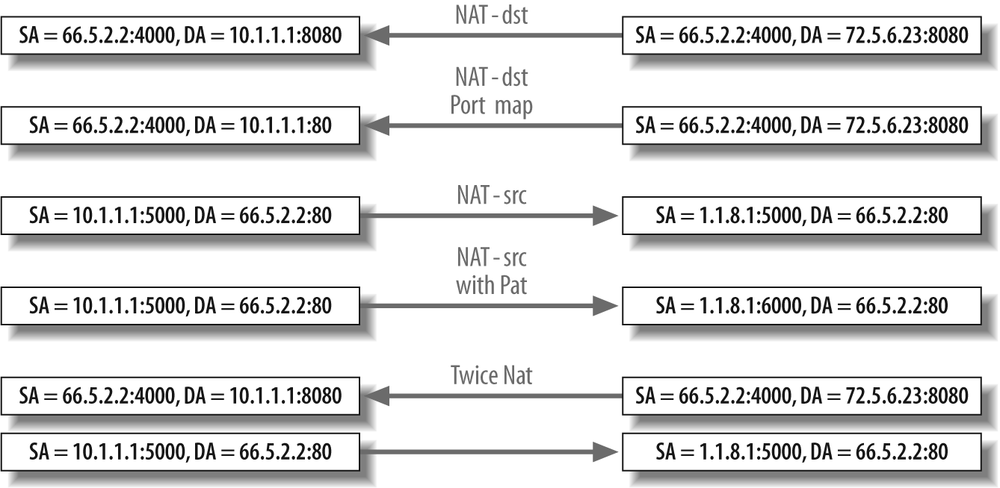NAT
NAT is simply a way to change the source or destination IP address of a packet due to public address exhaustion or a security mechanism to protect internal hosts. The internal hosts can be mapped to their own individual public addresses, or a pool of addresses could be used. Also, many addresses could be mapped to a single address utilizing different Transmission Control Protocol/User Datagram Protocol (TCP/UDP) port numbers for the flow, referred to as Port Address Translation (PAT). The most common NAT scenarios are listed here (and shown in Figure 8-8):

Figure 8-8. Common NAT deployments
- Destination NAT without port mapping
The incoming public address is mapped to a private address. This is usually used to hide an internal server’s address from the outside world.
- Destination NAT with port mapping
The incoming destination address and port are mapped to a private address. This allows for many services to be tied to the same destination address differentiated by port numbers. This is normally used when only a single external address is given that must map to multiple private connections.
- NAT source without port translation
The outgoing private source IP address is mapped to a public IP address. This is used when inside hosts want to reach external networks and the host information wants to remain hidden.
- NAT source with port translation
The outgoing private IP address is mapped ...
Get JUNOS Enterprise Routing now with the O’Reilly learning platform.
O’Reilly members experience books, live events, courses curated by job role, and more from O’Reilly and nearly 200 top publishers.

